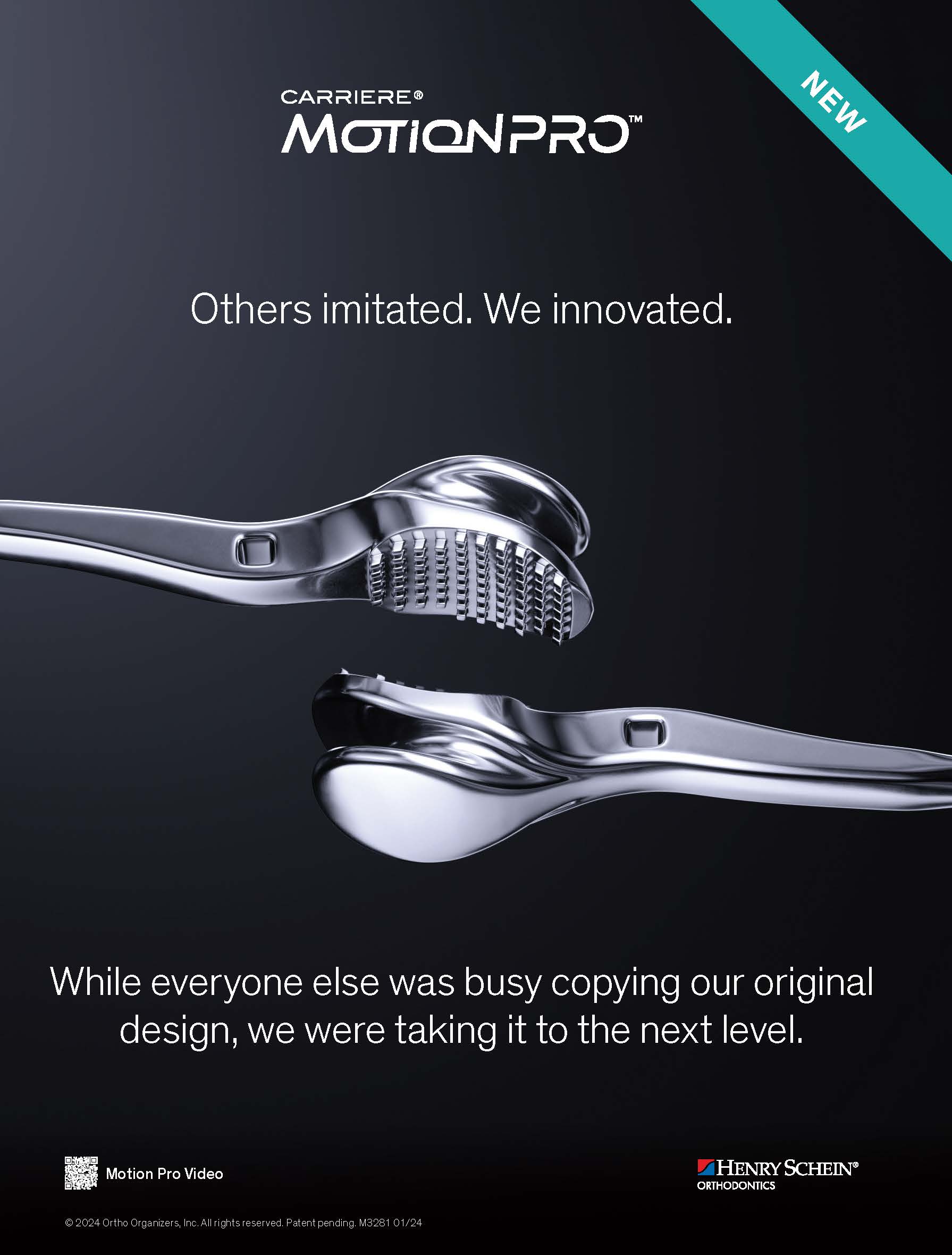This month, many of our readers will be taking the ABO scenario-based exam, which replaced the traditional case requirements in February 2019. Designed to be an objective evaluation of an orthodontist’s knowledge, abilities, and critical-thinking skills, the new exam comprises six scenarios with questions about diagnosis, treatment objectives, implementation, and critical analysis. One topic that is covered every year is the cervical vertebral maturation (CVM) method.
CVM is a diagnostic technique used to help determine an adolescent’s skeletal maturational stage, which is crucial in deciding the optimal time to initiate treatment with an orthopedic device such as a Herbst appliance or MARA. The method evaluates the development of the second (C2), third (C3), and fourth (C4) cervical vertebrae on a two-dimensional lateral cephalogram. Remarkably, Don Lamparski originally described CVM more than five decades ago, in an unpublished 1972 master’s thesis.
Similar articles from the archive:
- THE EDITOR'S CORNER The Case for Good Records February 2008
- THE EDITOR'S CORNER Taking Adequate Records February 2004
There are six cervical stages of maturation (CS 1-6). To help understand these stages, the CVM method can be simplified into two steps. The first evaluates the inferior borders of C2, C3, and C4 to determine whether they are flat or curved. The second evaluates the shapes of C3 and C4 to determine whether they are trapezoidal, rectangular horizontal, square, or rectangular vertical. CS 1 and 2 are prepubertal stages, CS 3 and 4 are circumpubertal, and CS 5 and 6 are postpubertal.
At CS 1, the inferior border of C2 is flat. C2 is the easiest cervical vertebra to see on a lateral cephalogram; it’s known as “the axis vertebra” because of its prominent odontoid process, which helps rotate the head. CS 1 is the ideal time for Phase I treatment with a protraction facemask and rapid maxillary expander. On the other hand, at CS 2, the inferior border of C2 is curved, but the inferior borders of C3 and C4 remain flat. CS 2 is considered the “get-ready” stage, because peak mandibular growth is nearly a year away.
At CS 3, the inferior borders of C2 and C3 are curved, but the inferior border of C4 remains flat. Similarly, at CS 4, the inferior borders of all three vertebrae (C2-C4) are curved. Most important, the maximum craniofacial growth can be expected at CS 3-4. By CS 5, the shapes of C3 and C4 have become square, indicating that most craniofacial growth has been achieved. At CS 6, C3 and C4 are rectangular vertical in shape, and the patient is ready for orthognathic surgery or dental implants.
I’ve always considered the CVM method to be a modern-day version of Leonard Fishman’s hand-wrist radiograph (for example, CS 3 = SMI 5-6). Of course, its primary advantage is that it is performed on a lateral cephalogram, which is routinely available for orthodontic diagnosis. Ultimately, the CVM method is a diagnostic tool that should be used in combination with other skeletal maturity indicators, such as the patient’s chronological age, stage of dental development, and increase in statural height.
I suggest a review of the landmark article by McNamara and Franchi, which is included on the ABO required reading list.1 My advice is to start incorporating the CVM method when prescribing functional appliances or monitoring mandibular prognathism. Because JCO’s mission includes reinforcement of the ABO’s clinical concepts, we will ask our authors to do the same. In fact, a monthly reading of our journal should help you prepare for the scenario-based exam, so that studying won’t seem like such a Herculean task.



COMMENTS
.